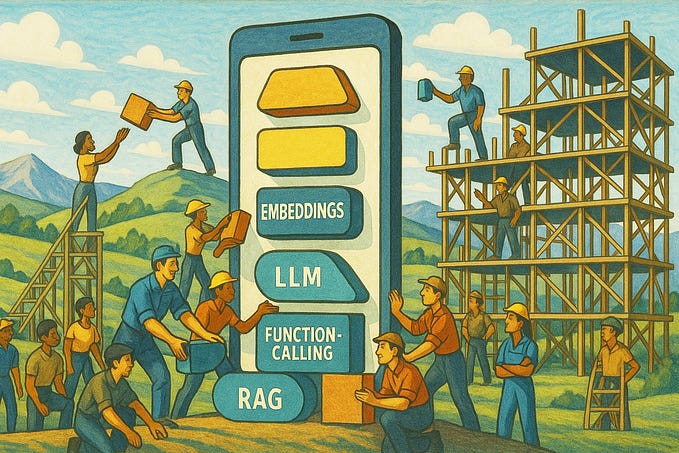Human Communication
‘Presumption to create’ — establishing a positive guiding rule for augmented reality
Establishing authority for the new medium, from the Aeneid to AR, through the lens of the Classics
Augmented reality is a growing superstructure, a creative infrastructure — a new touchpoint of the internet. The pace of development outstrips our ability to understand it. Unlike commercial entities it has the potential to become, in the words of 18th century poet Alexander Pope, “A work t’outlast immortal Rome design’d.”
With our daily lives and more and more people’s livelihoods increasingly impacted — Let us now see the authority we can inherit and claim for ourselves within this new opportunity.

“Poets are the unacknowledged legislators of the world” — Percy Bysshe Shelley, 19th century Poet
Building Authority at the Foundation Stage — ‘Making History’
“To augment,” “to increase,” “to enrich,” comes from the verb auger to which the word authority, auctoritas, derives from. In the Roman mind authority was foundational always depending upon augmenting the foundation, carrying the past alive into the present. Prior to Rome’s infrastructure building, Virgil wrote the Aeneid. This set out to found a city, “dum conderet urbem,” that would be Rome.
This is the stage AR is at now. As with Virgil’s Rome it is the opportunity of being part of building something that will be immortalized greatly.
Great individuals dig
‘Condere’ the verb means to bury, to found — to dig the foundations for a city yet built. The creatives work, the work of any innovator is akin to digging. Through them the future’s foundations are built. And all great individuals dig. Any work without it is sterile.
It is the role of all involved to add to AR’s concrete, rationalist and technological foundation ingredients of the marvelous and magical that will shape this new infrastructure prior to mass adoption.
‘PRESUMPTION TO CREATE’ — Free passport for innovation and creativity, Immunity from borders, creativity unbounded
‘Learn hence for ancient rules a just esteem / To copy nature is to copy them’ — Alexander Pope, An Essay on Criticism
‘The Táin’ (‘The Raid’) is another pile foundation of the Western Canon. The Irish epic is a mix of myth and history. Irish poet Thomas Kinsella once wrote, after being failed by a modern map, “We should have trusted” this, “our book” instead. Irish poet Ciaran Carson’s translation of the epic sets out the 3 points of the law of the land enacted at borders. It is here we can read a close conjunction applicable to AR as it involves the digital crossing the border to the physical world, temporarily without boundary;
- “To offer safe passage to anyone who came with poetry.” In relation to this new medium the term can be extended with those coming with ‘great creativity.’ That is to say a right exists, a freedom, a ‘presumption to create.’ The rule also implies particularly great creators not only be welcome but be taken “care of” and provided with resources from hosts.
- To “challenge” anyone who came with hate.
- “No one proceeded” to the prominent public space without being checked. Similar to current protocol for the Apple App Store, but extended into the 3D physical world. It is based on merit and character of the application or digital experience not on one’s title, background, educational degree, or personal resources.

“that day will come …. when the public situation will be more important than the private.” — Ovid, Tristia
A major AR use case to date is ‘City Praise, Laus Urbis’ — Anthropomorphizing the city
Globally this is one of today’s main use cases of the technology. Adding value to business verticals including tourism, heritage and culture, retail and advertising, entertainment, gaming, and social. The digital becomes a type of repository of collective cultural memory, a kind of archaeological aesthetic, a meeting place where the mythological and the historic stands closely.
AR infrastructure can be summarized in just two components;
- a) Small-town Homers: Builders, the engineers and artists, of the infrastructure, those who build the tools and experiences consumed.
- b) The Odysseus: The users who are the center and hero of their own worlds consuming these blossoming assembly of experiences.
Discount not these empheral experiences, these glimpsed things, the benediction of creation is the ringing bell which reverberates quietly and persistently in the head long after it is seen.
Conclusion — Subverting bricks, Undermining walls
With the Aeneid now in your pocket, there are no pieties for the future of the internet.
People have great capacity for toolmaking and storytelling with such technology reviving these constant human traits.
Today’s evidence, financing, and facts for AR sets out the frontiers are everywhere, possibilities boundless, in this ‘mundus imaginalis.’ It remains a craft without an established apprenticeship and “a vocation without a ministry.”
The internet’s future may just turn out, in the words of James Joyce from the last Western Classic — Finnegans Wake — as a “Hueful Panepiphanal World,” through reason but also through our imagination.

Further works from this writer can be found on their Medium profile. Related articles include;









